#River Reuss
Text




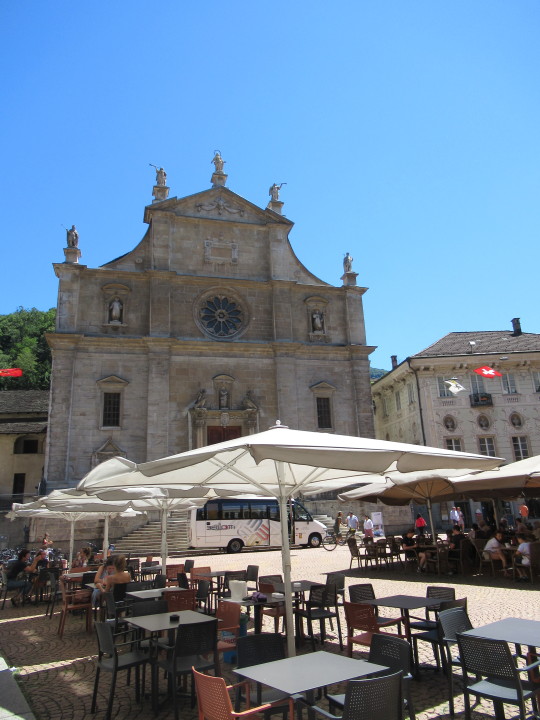





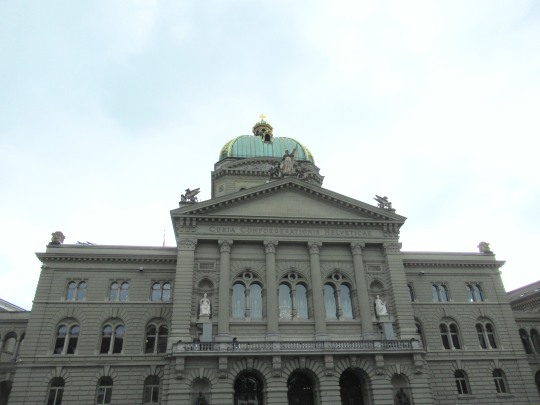



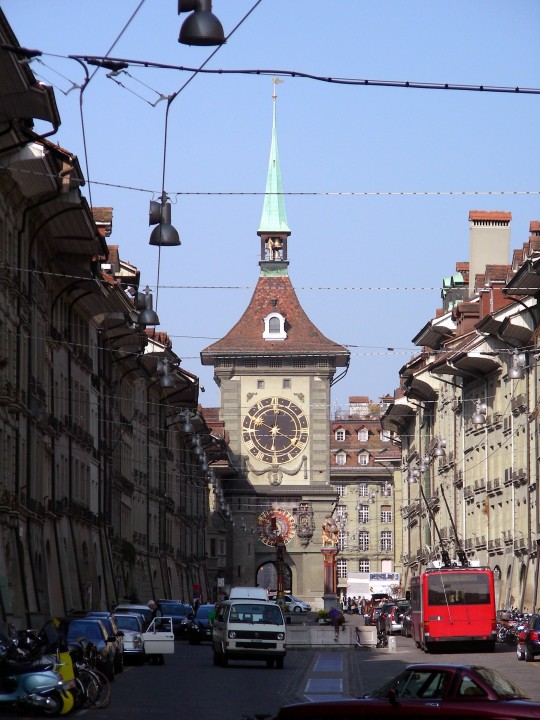



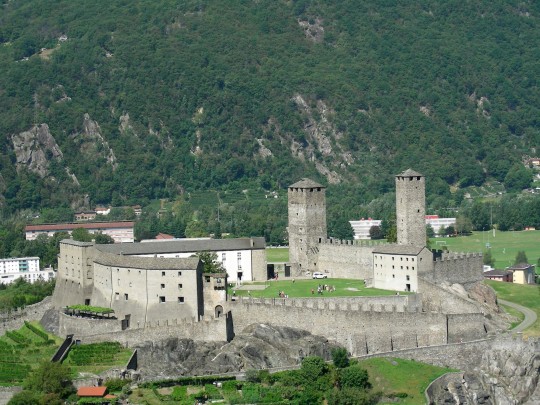

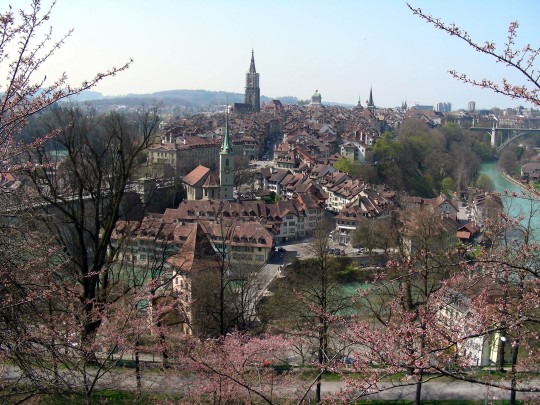





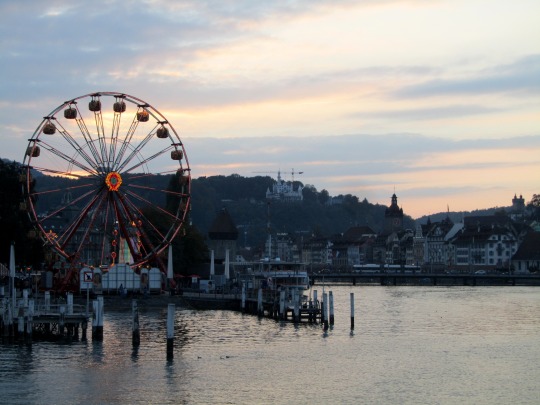



The Republic of Switzerland was formed on March 29, 1798.
#Republic of Switzerland#formed#29 March 1798#anniversary#cityscape#Swiss history#Luzern#Lucerne#Schweiz#original photography#landscape#countryside#River Reuss#Kapellbrücke#Rigi#Stanserhorn#Lake Lucerne#Vierwaldstättersee#Bern#Berner Münster#Bundeshaus#River Aare#Federal Palace of Switzerland#Mount Pilatus#Seebodenalp#Castel Grande#Bellinzona#Klewenalp#Swiss Alps#travel
2 notes
·
View notes
Text
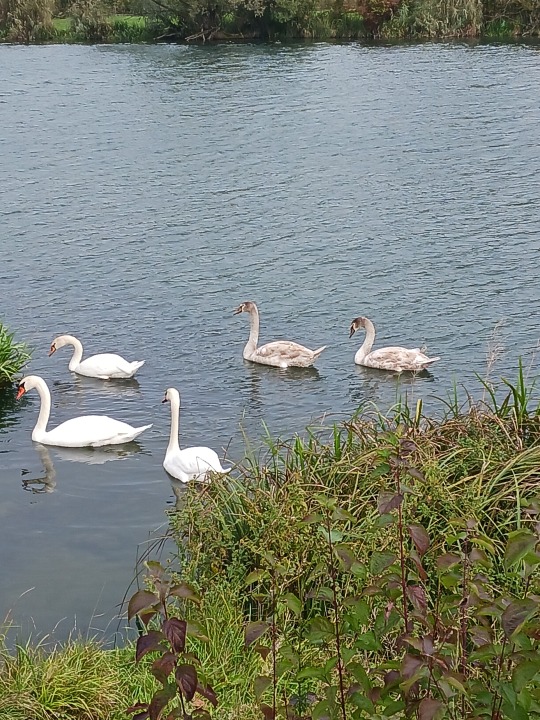
Swans near Rottenschwil, Switzerland, 18 October 2023
#Swans#Photographers on tumblr#Schwäne#Cygnes#Cisnes#Rio#River#Nature#Natureza#Naturaleza#Fluss#Reuss#Rottenschwil#Switzerland
4 notes
·
View notes
Text

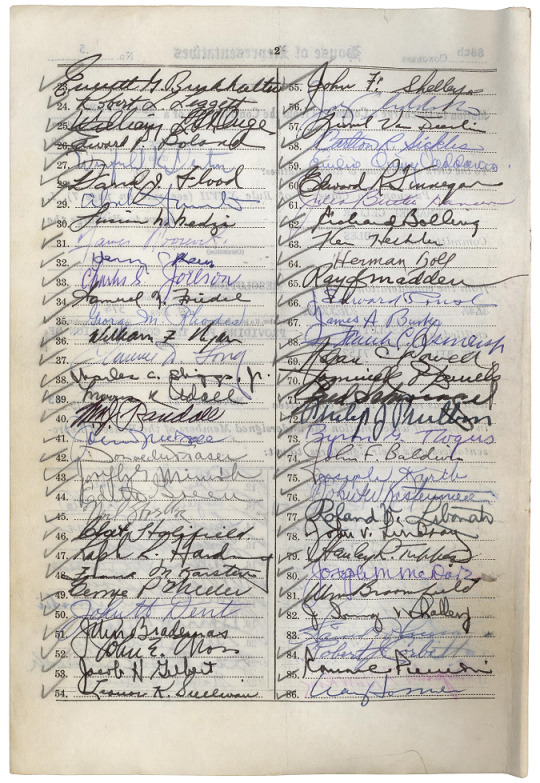
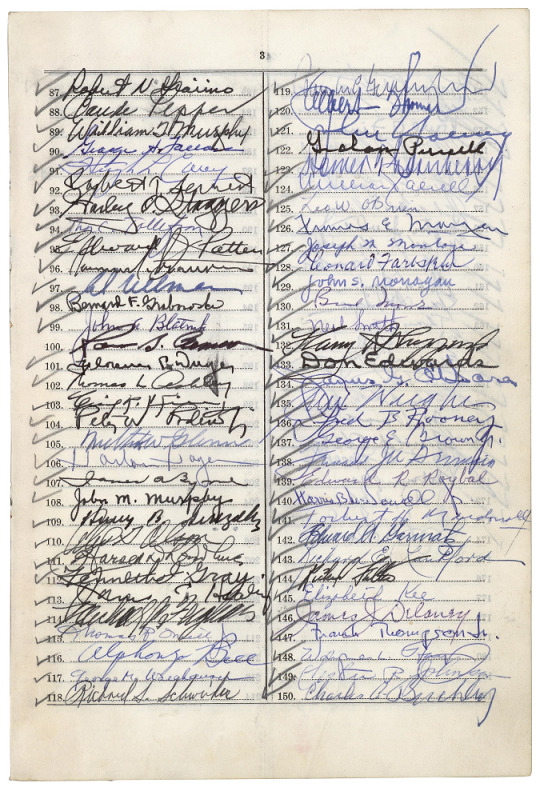

Discharge Petition for H.R. 7152, the Civil Rights Act of 1964
Record Group 233: Records of the U.S. House of RepresentativesSeries: General Records
This item, H.R. 7152, the Civil Rights Act of 1964, faced strong opposition in the House Rules Committee. Howard Smith, Chairman of the committee, refused to schedule hearings for the bill. Emanuel Celler, Chairman of the Judiciary Committee, attempted to use this discharge petition to move the bill out of committee without holding hearings. The petition failed to gain the required majority of Congress (218 signatures), but forced Chairman Smith to schedule hearings.
88th CONGRESS. House of Representatives No. 5 Motion to Discharge a Committee from the Consideration of a RESOLUTION (State whether bill, joint resolution, or resolution) December 9, 1963 To the Clerk of the House of Representatives: Pursuant to Clause 4 of Rule XXVII (see rule on page 7), I EMANUEL CELLER (Name of Member), move to discharge to the Commitee on RULES (Committee) from the consideration of the RESOLUTION; H. Res. 574 entitled, a RESOLUTION PROVIDING FOR THE CONSIDERATION OF THE BILL (H. R. 7152) which was referred to said committee November 27, 1963 in support of which motion the undersigned Members of the House of Representatives affix their signatures, to wit: 1. Emanuel Celler 2. John J. Rooney 3. Seymour Halpern 4. James G Fulton 5. Thomas W Pelly 6. Robt N. C. Nix 7. Jeffery Cohelan 8. W A Barrett 9. William S. Mailiard 10. 11. Augustus F. Hawkins 12. Otis G. Pike 13. Benjamin S Rosenthal 14. Spark M Matsunaga 15. Frank M. Clark 16. William L Dawson 17. Melvin Price 18. John C. Kluczynski 19. Barratt O'Hara 20. George E. Shipley 21. Dan Rostenkowski 22. Ralph J. Rivers[page] 2 23. Everett G. Burkhalter 24. Robert L. Leggett 25. William L St Onge 26. Edward P. Boland 27. Winfield K. Denton 28. David J. Flood 29. 30. Lucian N. Nedzi 31. James Roosevelt 32. Henry C Reuss 33. Charles S. Joelson 34. Samuel N. Friedel 35. George M. Rhodes 36. William F. Ryan 37. Clarence D. Long 38. Charles C. Diggs Jr 39. Morris K. Udall 40. Wm J. Randall 41. 42. Donald M. Fraser 43. Joseph G. Minish 44. Edith Green 45. Neil Staebler 46. 47. Ralph R. Harding 48. Frank M. Karsten 49. 50. John H. Dent 51. John Brademas 52. John E. Moss 53. Jacob H. Gilbert 54. Leonor K. Sullivan 55. John F. Shelley 56. 57. Lionel Van Deerlin 58. Carlton R. Sickles 59. 60. Edward R. Finnegan 61. Julia Butler Hansen 62. Richard Bolling 63. Ken Heckler 64. Herman Toll 65. Ray J Madden 66. J Edward Roush 67. James A. Burke 68. Frank C. Osmers Jr 69. Adam Powell 70. 71. Fred Schwengel 72. Philip J. Philiben 73. Byron G. Rogers 74. John F. Baldwin 75. Joseph Karth 76. 77. Roland V. Libonati 78. John V. Lindsay 79. Stanley R. Tupper 80. Joseph M. McDade 81. Wm Broomfield 82. 83. 84. Robert J Corbett 85. 86. Craig Hosmer87. Robert N. Giaimo 88. Claude Pepper 89. William T Murphy 90. George H. Fallon 91. Hugh L. Carey 92. Robert T. Secrest 93. Harley O. Staggers 94. Thor C. Tollefson 95. Edward J. Patten 96. 97. Al Ullman 98. Bernard F. Grabowski 99. John A. Blatnik 100. 101. Florence P. Dwyer 102. Thomas L. ? 103. 104. Peter W. Rodino 105. Milton W. Glenn 106. Harlan Hagen 107. James A. Byrne 108. John M. Murphy 109. Henry B. Gonzalez 110. Arnold Olson 111. Harold D Donahue 112. Kenneth J. Gray 113. James C. Healey 114. Michael A Feighan 115. Thomas R. O'Neill 116. Alphonzo Bell 117. George M. Wallhauser 118. Richard S. Schweiker 119. 120. Albert Thomas 121. 122. Graham Purcell 123. Homer Thornberry 124. 125. Leo W. O'Brien 126. Thomas E. Morgan 127. Joseph M. Montoya 128. Leonard Farbstein 129. John S. Monagan 130. Brad Morse 131. Neil Smith 132. Harry R. Sheppard 133. Don Edwards 134. James G. O'Hara 135. 136. Fred B. Rooney 137. George E. Brown Jr. 138. 139. Edward R. Roybal 140. Harris. B McDowell jr. 141. Torbert H. McDonall 142. Edward A. Garmatz 143. Richard E. Lankford 144. Richard Fulton 145. Elizabeth Kee 146. James J. Delaney 147. Frank Thompson Jr 148. 149. Lester R. Johnson 150. Charles A. Buckley4 151. Richard T. Hanna 152. James Corman 153. Paul A Fino 154. Harold M. Ryan 155. Martha W. Griffiths 156. Adam E. Konski 157. Chas W. Wilson 158. Michael J. Kewan 160. Alex Brooks 161. Clark W. Thompson 162. John D. Gringell [?] 163. Thomas P. Gill 164. Edna F. Kelly 165. Eugene J. Keogh 166 John. B. Duncan 167. Elmer J. Dolland 168. Joe Caul 169. Arnold Olsen 170. Monte B. Fascell [?] 171. [not deciphered] 172. J. Dulek 173. Joe W. [undeciphered] 174. J. J. Pickle [Numbers 175 through 214 are blank]
32 notes
·
View notes
Text
“Overjoyed at this discovery, he hastened to the house, which was situated in a mean street, near the Reuss.”
The annotation: “The principal river of Lucerne, flowing out of its lake. The Shelleys visited Lake Lucerne and descended through the rapids of the Reuss in September 1814.”
I’m probably wrong but my assumption is they whitewater rafted. Mostly because I think that would make them 20 percent cooler.
9 notes
·
View notes
Text
Engineers facilitate the restoration of lake deltas
06.03.24 - Engineers from EPFL and partner organizations have developed a method for classifying lacustrine deltas based on morphological parameters, in order to determine which of the deltas severely altered by human activity are best suited for restoration to their natural state.
The Reuss delta on the edge of Lake Lucerne is once again a nature-lover’s paradise, complete with gravel islands and stretches of shallow water where plants, animals and bathers coexist in harmony. Thanks to a series of restoration projects, engineers have been able to recreate the delta’s natural ecosystem, fostering biodiversity and helping to protect the shoreline. It’s a far cry from the riprap that had previously dominated the landscape. The Reuss delta is one example of the lacustrine delta restauration work that Alexandre Fourrier studied as an environmental engineering student at EPFL’s School of Architecture, Civil and Environmental Engineering (ENAC). For his in-company Master’s project, he investigated morphological processes in lacustrine deltas. His research was supervised by Giovanni De Cesare, the operational director of EPFL’s Hydraulic Constructions Platform, Marina Launay from the Gruner engineering firm, and Stéphanie André from Vaud Canton’s department of the environment. They developed a new method that can drastically simplify the preliminary studies performed by engineers ahead of restoration work. The study findings were published recently in Ecological Engineering.
In 2011, Switzerland passed an amendment to its water protection act making it mandatory to restore watercourses such as rivers and streams. This led to the implementation of restoration plans for the country’s large rivers such as the Rhone, Reuss and Aar. In Vaud Canton, over 40 kilometers of watercourses have been restored since 2014. The law also applies to lakeshores and lacustrine deltas – and this poses particular challenges for Lake Geneva, where only 3% of the shore is still in its natural state. Alexandre Fourrier and Giovanni De Cesare are taking measurements in the Chamberonne delta on the shores of Lake Geneva.© 2024 EPFL/Alain Herzog
Reconnecting rivers and lakes
Since the late 19th century, anthropization – the alteration of natural environments by human activity – has been taking place on a growing scale. One example is the construction of dams to prevent flooding. Often, anthropization involves building farms, manufacturing plants and infrastructure on river deltas. “Today, restoring these deltas means opening up dikes and creating space for a range of habitats to develop that can support biodiversity,” says Fourrier. “It also means allowing rivers to flow back into lacustrine deltas, which all have their own dynamics. This would allow the sediment carried in river water to be deposited at the river mouth, thus helping to prevent the erosion caused by waves and lacustrine currents.” He offers a telling example: “Anthropization in the Reuss delta has caused the shoreline to recede by over 100 meters.”
The method that Fourrier and his colleagues developed has the advantage of being particularly easy to use, since it relies on just two parameters. “Engineers can use it to evaluate a delta’s restoration potential by entering the slope of the upstream watercourse and the opening angle of the delta,” he says. The method can also help determine the space required for the water course to fulfill its natural functions. The method results in a diagram like the ones used to classify rivers according to their morphology. “Alexandre’s approach is a genuine breakthrough because this type of classification had never been done before for river deltas,” says De Cesare. Experts at Gruner had identified the need for such an approach based on restoration projects they had carried out in conjunction with Vaud Canton. The evolution of the Reuss delta on the edge of Lake Lucerne between 2022 and 1937.© Swisstopo
Traveling through time… http://actu.epfl.ch/news/engineers-facilitate-the-restoration-of-lake-delta (Source of the original content)
0 notes
Photo
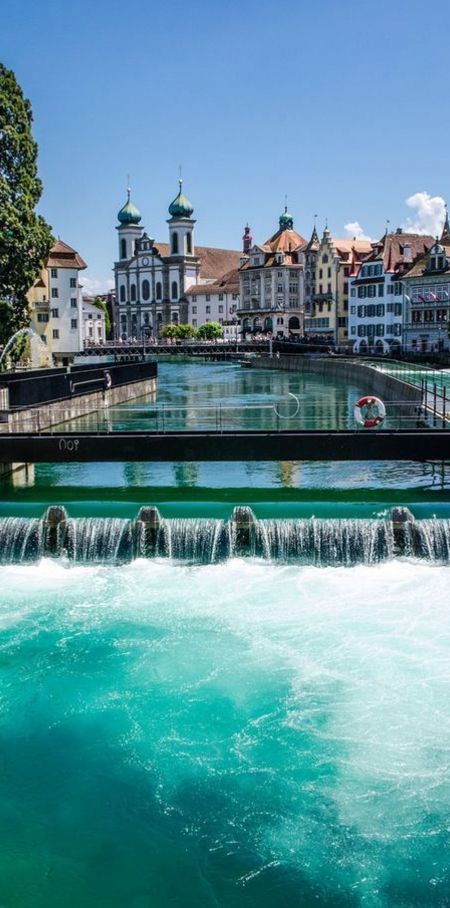
Switzerland Travel Inspiration - Reuss river in Lucerne / Switzerland
Embrace the serenity of Switzerland's Reuss river in Lucerne, a picturesque destination that will inspire your inner adventurer.
0 notes
Text
Greetings, fellow wanderers,
Embark with me on a journey to the heart of Eruope, where snow-capped peaks, pristine lakes, and charming villages paint a picture of timeless beauty — welcome to Switzerland. Its cities contain medieval quarters with landmarks like capital Bern's Zytglogge clock tower and Lucerne's wooden chapel bridge. The country is also known for its ski resorts and hiking trails.
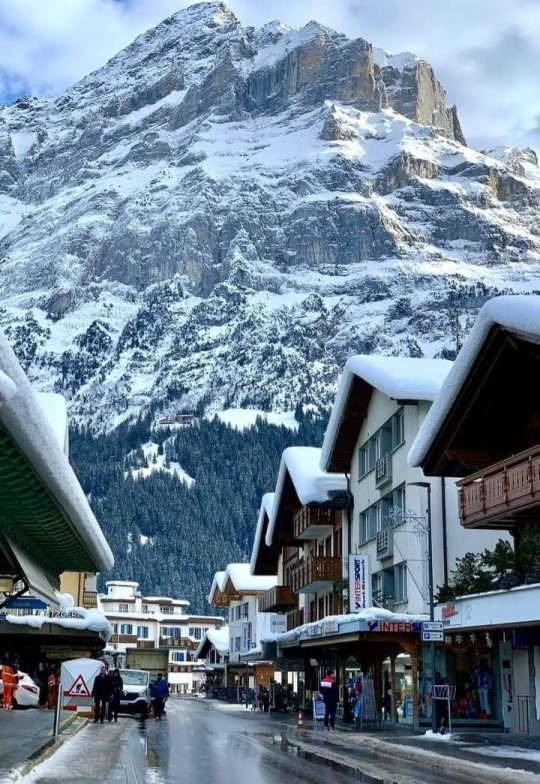
◇Things to do in Switzerland
☆ Visit the Chapel Bridge and Water Tower
The Chapel Bridge is a wooden pedestrian bridge that spans the Reuss River in the city of Lucerne. The Bridge is named after the nearby St. Peter's Chapel that was built in 1333. The Bridge is also one of the oldest wooden bridges in Europe. One of the characteristics of the Chapel Bridge is the triangular paintings hanging below its roof that depict events from the history and legends of Lucerne.
The Water Tower is a part of the bridge that stands on water. The Tower is older than the bridge and was used as a prison and archive. Although the Tower is not open to the public, it is still a beautiful site to see.
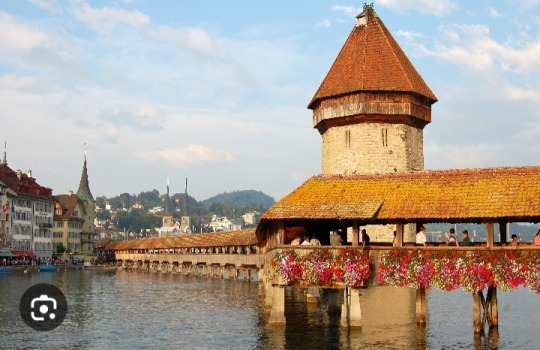
☆ Visit the Swiss National Museum
The Swiss National Museum holds a collection on tue cultural history, craftsmanship, and artworks of Switzerland from its beginnings to the present day.

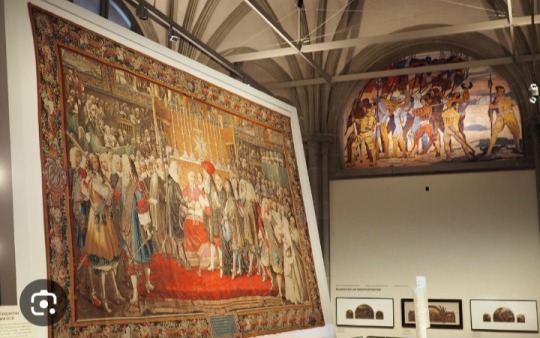
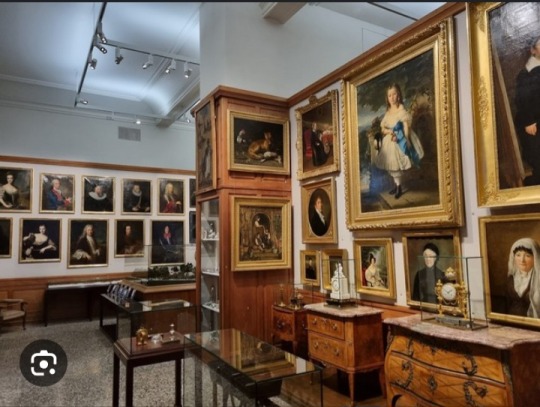
☆ Go on a tour to the Rhine Falls
The Rhine Falls is a breathtaking beauty and the largest plain waterfall in Europe. The Falls are located on the High Rhine at Neuhausen am Rheinfall Village on the north of Switzerland. The Rhine's waters flow at the rate of 23 meters over a breadth of 150 meters.
There are green zones in/near the Rhine which are for swimming and public use, however, swimming in the Rhine is usually recommended for very good swimmers due to its powerful currents.

☆ Experience Mount Pilatus
The mountain of Pilatus towers above the region with its 2,128 meters in height. The mountain is a source of mystical discoveries and is home to places of natural beauty that are steeped in legend and lore.
You can reach the mountain from Lucerne via the gondola lift and aerial cable car and from Alpnachstad with the world's steepest rack-railroad, aerial cable car and bus. The trip can also be combined with various types of sports or hiking tours.

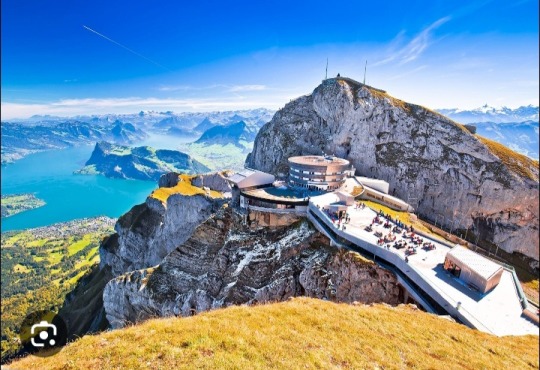
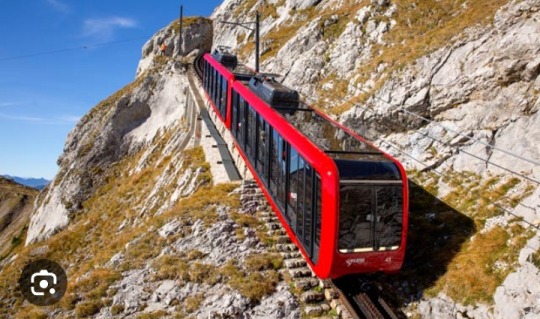

◇◇◇◇◇◇◇◇◇◇◇◇◇◇◇◇◇◇◇◇◇◇◇◇◇◇
As we bid adieu to this land of eternal landscapes, we carry the echoes of cowbells l, the warmth of Swiss hospitality, and the serenity found in the heart of the Alps.
Sour8of the pictures used
https://images.app.goo.gl/wXC1uKMh2rhsrHuD8
https://images.app.goo.gl/xfA8TyerrZAWrWjF8
https://pin.it/70MzbjE
https://pin.it/1Cire4F
https://images.app.goo.gl/cS6yS4YYvrgrpdMX6
https://images.app.goo.gl/5qupz8KsaU4HPFrJ8
Until the next alpine rendezvous,
Kate♡
1 note
·
View note
Text
Switzerland Travel Inspiration - Reuss river in Lucerne / Switzerland

Discover the breathtaking beauty of Lucerne, Switzerland, as you soak in the tranquility of the Reuss river. Let nature inspire your wanderlust.
0 notes
Photo

Switzerland Travel Inspiration - Reuss river in Lucerne / Switzerland
Embrace the serenity of Switzerland's Reuss river in Lucerne, a picturesque destination that will inspire your inner adventurer.
0 notes
Text
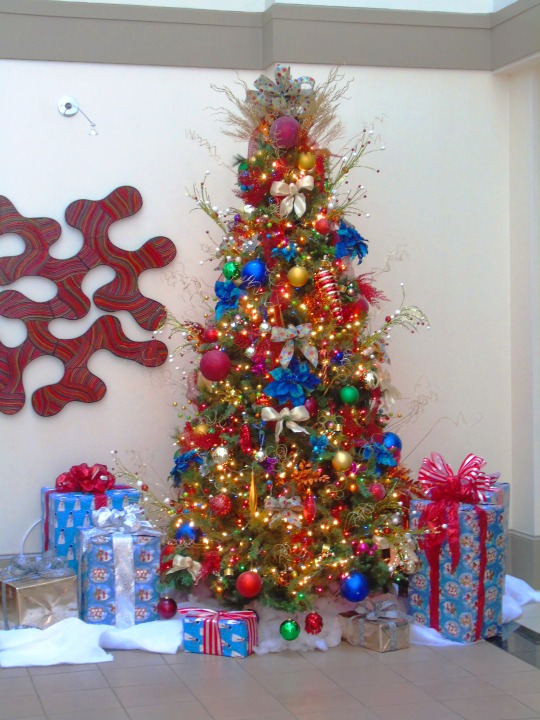



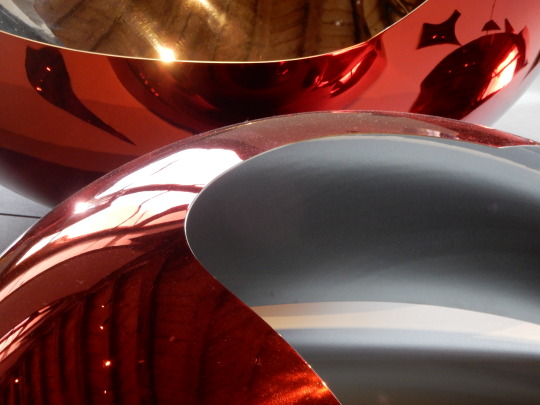
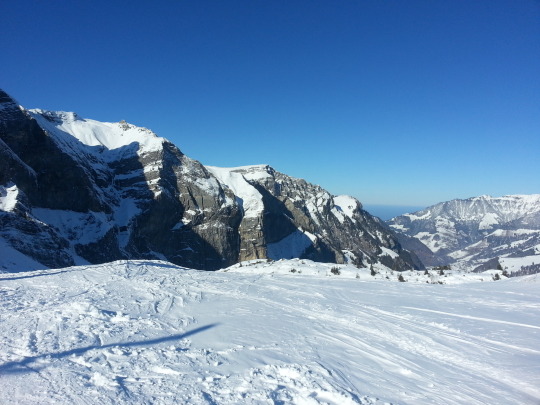

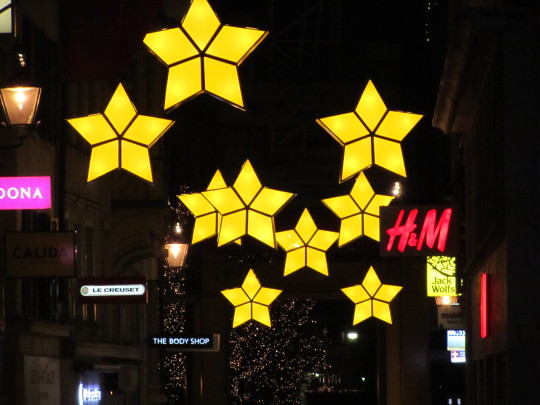


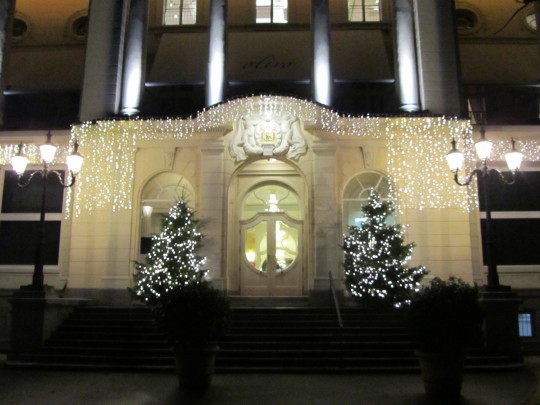
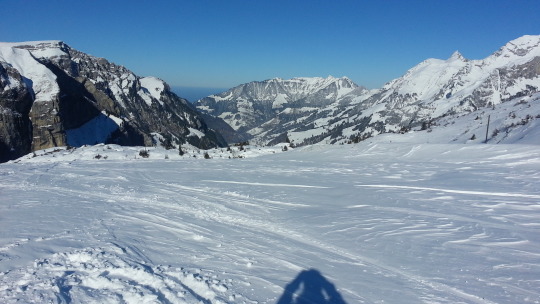
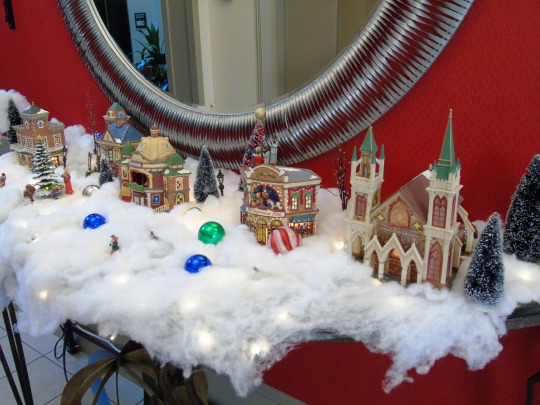

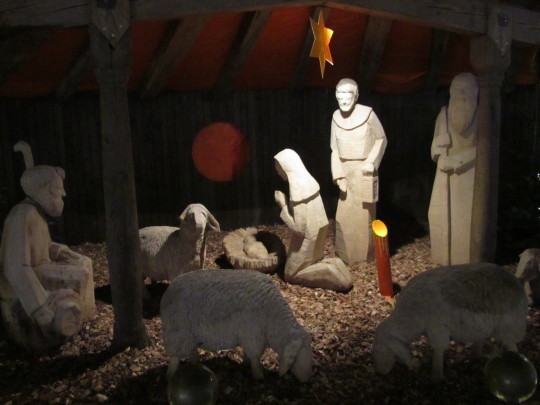


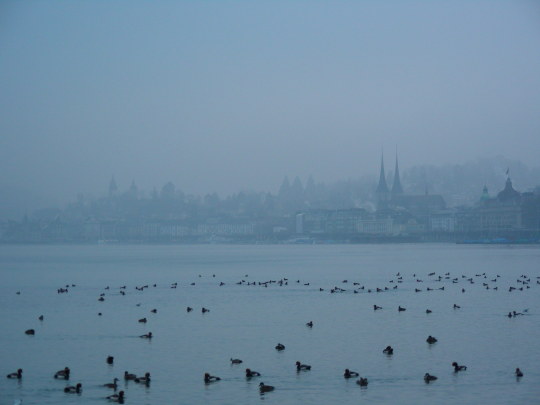
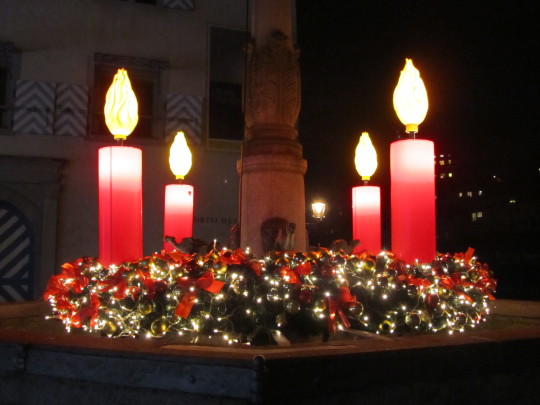
Boxing Day
The best way to celebrate the day is to take part in festivities in a country where Boxing Day is a bank holiday or public holiday. Watch some soccer, rugby, or cricket games, or go on a traditional fox hunt. If you can’t be in a country where these events are taking place, you could still get together with family and friends and eat leftovers from Christmas, or make some foods traditionally eaten on Boxing Day. You could also go shopping, as this is another important part of the day in many countries.
Boxing Day takes place the day after Christmas and is primarily observed in the United Kingdom, where it started, as well as in countries that were once part of the British crown. There are a few possible theories as to how it got started, but its exact origin is unclear.
One theory says it was inspired by Christmas boxes. In seventeenth-century Great Britain, boxes holding a present or gratuity were given to tradesman and workers in service industries for their previous year’s work. This went back to an even earlier tradition where servants would wait on and serve their rich masters on Christmas Day and would visit and celebrate with their own families on the day after Christmas. Their rich masters would sometimes give them a box with leftover food, a bonus, or another type of gift.
The day may have also stemmed from alms boxes that were put in Anglican churches on Christmas Day or during Advent and opened on the day after Christmas. These boxes collected money for the poor. Similarly, boxes were put outside of churches to collect money on Saint Stephen’s Day, which is held the day after Christmas. The events in the song “Good King Wenceslas” take place on Saint Stephen’s Day. The song recounts a story of King Wenceslas, a Bohemian king of the tenth century, bringing food and wine to a poor man. There is one other possible source for the beginning of the day. Ships once set sail containing a box of money for good luck. If the trip was a success, the box would be given to a priest, and he would open it on Christmas and give its contents to the poor.
Boxing Day has been a bank holiday in England, Wales, North Ireland, and Canada since 1871. It is celebrated in Australia, New Zealand, Trinidad and Tobago, and Nigeria. It is celebrated in Hong Kong, where the United Kingdom held sovereignty until 1997. In Ireland and in parts of Spain, it is known as Saint Stephen’s Day. It is celebrated as Second Christmas Day in some European countries, such as Poland, Hungary, Germany, Switzerland and the Netherlands; it is celebrated as such in Scandinavia as well. Boxing Day is generally not celebrated in the United States.
In some countries where it is celebrated as a bank holiday or public holiday, it is observed a day or two after December 26. If December 26 takes place on a Saturday, it may be observed the following Monday. If December 26 is on a Sunday, it may be observed on the following Tuesday. This is not always the case, however, as it is often observed on a Sunday if it falls on a Sunday.
Boxing Day is a day of the gathering of family and friends. Leftovers from Christmas are commonly eaten. Popular foods include baked ham, mince pies, Christmas cakes, and other desserts. In many countries of celebration, it is a shopping day similar to Black Friday. Sales take place and many retailers run them the whole week. Although, in some places, such as in parts of Canada, stores aren’t allowed to be open, in order to give families time to be together instead.
Sports are an important part of Boxing Day. In the United Kingdom, the top football (soccer) leagues of England, Scotland, and Northern Ireland play games. Lower leagues play games as well, and rugby leagues also hold matches. In various countries, events of other sports, such as cricket, horse racing, yacht racing, hockey, and boxing are often held to celebrate the day. Fun runs and swims in the cold English Channel take place. Fox hunting meets have been held for hundreds of years. A law passed in 2004, which went into effect the following year, banned the use of dogs to attack animals during hunts. But hunters have still used their dogs to chase artificial scents on the day, and have still gone on hunts where dogs are used to flush out foxes, but not to attack them.
Boxing Day, also known as Saint Stephen’s Day and Second Christmas Day, is being observed today! It has always been observed annually on December 26th.
Source
#Stephanstag#not for a long time#travel#Atlanta#Christmas in July#hotel lobby#Boxing Day#26 December#Georgia#Schweiz#Switzerland#Luzern#Lucerne#Lake Lucerne#Rigi#snow#River Reuss#old town#Christmas lights#night shot#landmark#tourist attraction#Saint Stephen’s Day#Second Christmas Day#holiday#BoxingDay#SaintStephensDay#Melchsee Frutt#Vierwaldstättersee#Obwalden
4 notes
·
View notes
Text

8Swans near Rottenschwil, Switzerland, 18 October 2023
#Swans#Photographers on tumblr#Schwäne#Reuss#River#Rio#Cisnes#Rottenschwil#Switzerland#Cygnes#Cigni#Fluss
6 notes
·
View notes
Text
[ad_1]
Set on a crystal-clear lake and backed by snow-capped mountains, Lucerne is a delightful city break fuelled by cheese and chocolate. Get the most out of this lakeside gem with our guide to the best things to do in Lucerne.
Lucerne is a charming city in central Switzerland framed by crystal-clear lakes and alpine landscapes. Graced with medieval architecture and cobbled squares, it’s one of the most beautiful cities in Switzerland.
With over 800 years of history, Lucerne has an enchanting old town of medieval architecture adorned with pastel frescoes.
A picture-perfect backdrop sets the scene for a host of wonderful things to do in Lucerne.
Take a stroll along the Lake Lucerne promenade and amble past exquisite architecture. Explore historic monuments, then have an Aperol in a lively square. Savour local culinary delights and admire Lucerne’s progressive art scene.
Here are all our favourite things to do in Lucerne, the jewel of central Switzerland.
Updates – We do our best to keep the information in this guide up to date, if you notice anything has changed, please leave a comment below. // Bookings – Booking your trip via the links in this guide will earn us a small commission, at no extra cost to you. Thanks for your support – Paul & Mark.
VIEW FROM SPREUERBRÜCKE, LUCERNE
1 – OLD TOWN
Lucerne’s Old Town is a fairy-tale setting of medieval squares, historic buildings, and narrow streets. The small heart of the city is car-free and perfect to explore on foot.
While you will spend much longer soaking up the atmosphere on your Lucern visit, you only need 1-2 hours to stroll through most of the Old Town.
Here are some of the highlights of the old town:
Kornmarkt // Kornmarkt was the grain market from 1356 to the late 19th century. The square contains the city’s most beautiful building, the town hall (Rathaus). A 14th-century clock tower adorns the Italian Renaissance-style building with a typical Swiss roof.
Hirschenplatz // Another beautiful square, ornate frescoes adorn the buildings in Hirschenplatz. Many are saints immortalized to protect the buildings, while others are advertising for the businesses. Keep an eye out for the prancing cherubs holding rings on the jewellery business.
Weinmarkt // The Wienmarkt was the fish market until the middle of the 16th century. The Weinmarkt fountain from 1481 features an octagonal basin and a limestone sculpture.
Mühlenplatz // Mühlenplatz is the largest of Lucerne’s squares. It’s a great place for dinner and drinks in a local setting a short distance from the very touristy riverside area.
DORNACHERHAUS
MÜHLENPLATZ
RATHAUS CLOCK TOWER
2 – CHAPEL BRIDGE & WATER TOWER
The Chapel Bridge, also known as Kapellbrücke, is one of the most famous landmarks in Lucerne. It’s a covered wooden footbridge that diagonally spans the Reuss River. Built in the 14th century, the Chapel Bridge is the oldest wooden covered bridge in Europe.
Paintings by local painter Hans Heinrich Wägmann, depicting the history of the city, adorn the inside of Kapellbrücke. A fire in 1993 destroyed some of the paintings and much of the bridge. The rebuild restored all the charm to Chapel Bridge.
The Water Tower was erected in the late 13th century, almost 100 years before the bridge. Lucerne’s ruling class used the four floors inside the building as a treasury and a prison. The 30-metre octagonal building is one of the most photographed landmarks in Lucerne.
Tips for visiting – The Water Tower is not open to the public, but it’s free to stroll across the bridge any time of day. It’s particularly stunning at sunset when the colourful buildings in the background glow a golden hue.
KAPELLBRÜCKE
3 – MUSEGG WALL
The Musegg Wall is an 870-metre medieval wall with 9 towers that surround the old town of Lucerne. The walls were built in the 14th century to protect the city from invaders. They are considered some of the best-preserved defensive walls in Switzerland.
Strolling on the wall
and enjoying panoramic views of the city nestled under the surrounding mountains is a unique thing to do in Lucerne.
Several of the towers are open to the public between April and November from 8 am to 7 pm:
The Männli Tower takes its name from the iron figure of the Männli (little man) crowning the top.
The Heu Tower stored hay and gunpowder until 1701 when a lightning strike caused an explosion that ripped the tower apart.
The Zyt Tower has a clock face large enough for fishermen to read it from the lake.
The Schirmer Tower marked the divide between the entity of Lucerne and the countryside.
The remaining towers, Nölli, Luegisland, Pulver, Allenwinden Dächli are visible from various points throughout the city.
MUSEGG WALL TOWERS FROM LUCERNE
4 – SWISS MUSEUM OF TRANSPORT
The Swiss Museum of Transport is the most-visited museum in Switzerland and a great thing to do in Lucerne in winter.
The massive collection includes historic cars, planes, simulators, interactive media, and learning experiences.
Day passes to the Transport Museum include access to the Swiss Chocolate Adventure. Learn about the chocolate-making process and watch the experts prepare individual goodies for you to try.
Another great attraction at the Transport Museum is the IMAX screen – the largest in Switzerland. Additionally, Media World is a virtual reality experience featuring adrenaline sports.
The museum is the perfect family-friendly thing to do in Lucerne.
DETAILS | SWISS MUSEUM OF TRANSPORT
hours – 10 am to 6 pm (summer) / 10 am to 5 pm (winter) | cost – CHF 62 (day pass) / CHF 35 (museum + Media World)
DAY PASS // ENTRY TICKET
5 – LION MONUMENT
The Lion Monument, or Löwendenkmal, commemorates the Swiss Guards killed during the French Revolution.
The sculpture shows a lion dying with a spear in its side, carved into a cliff made of sandstone. The lion is covering a shield that has the fleur-de-lis symbol on it, which stands for the French monarchy.
Beside him is another shield bearing the coat of arms of Switzerland.
An inscription under the sculpture tells how many soldiers died (760) and lived (350).
The monument is not without controversy. Many people oppose it because it represents the loss of Swiss lives in support of a foreign power.
Nonetheless, set in a small English Garden with a tranquil pond outside the old town, it’s a wonderful free thing to do in Lucerne.
LION MONUMENT
6 – JESUIT CHURCH ST FRANCIS CAVIER
The Baroque Jesuitenkirche occupies a striking position on the banks of the River Reuss.
The Jesuit order were active in the Catholic fight against Protestantism in Switzerland. Good favour got them invited to Lucerne in 1573 to establish a college. The mayor funded the enterprise from his private wealth.
Construction of the church aligned to the college commenced in 1667 but it remained unfinished at its consecration in 1677.
The building was modelled on the Church of the Gesù in Rome and the Baroque style was one of the first of its kind in Switzerland.
Inside, the church is beautiful. Decorated with golden rococo stucco, sculptures, and paintings, the space is a pristine dazzling white.
The highlights are the high altar, the organ, and the painted ceiling depicting scenes from St Francis Xavier, the Patron Saint of Lucerne.
Tip for visiting – The Jesuit Church is one of the best free things to do in Lucerne. If services are underway you’ll need to stay in the entrance hall, so try to time your visit to avoid those times.
DETAILS | JESUIT CHURCH
Hours – 6:30 am to 6: 30 pm (Monday & Thursday the church opens at 9:30 am | Church Services – Sunday 7 am, 10 am, 3 pm, 5 pm / Monday & Thursday 7 am / Tuesday, Wednesday, Friday & Saturday 7 am | cost – Free
JESUIT CHURCH, LUCERNE
JESUIT CHURCH, LUCERNE
7 – RICHARD WAGNER MUSEUM
The Richard Wagner Museum commemorates the life and work of the famous composer. He spent several years living in the beautiful villa which now houses the museum.
Overlooking Lake Lucerne, the museum features exhibits about Wagner’s life and music.
There are handwritten musical scores, letters, historical photographs, paintings, and memorabilia. The score to Siegfried Idyl is the most important exhibit in the museum.
Guided Tours – Tours with a Wagner expert start at 3 pm daily and include the villa and the grounds. It finishes with a short recital on Wagner’s grand piano.
Lucerne Festival Piano Recitals – As part of the Lucerne Festival, short concerts at held at the Richard Wagner Museum. Hear the Erard Grand Piano which the composer used to write his most famous works.
DETAILS | RICHARD WAGNER MUSEUM
Hours – 11 am to 5 pm (Tuesday to Sunday) | cost – CFH 20 | Audioguide – The audioguide is free but you need to bring your own headphones with you | website – richard-wagner-museum.ch
8 – LAKE LUCERNE
Stretching in many directions and nestled in 4 valleys, Lake Lucerne is a stunning body of water and the centrepiece of Lucerne.
Surrounded by tall mountains, the lake is one of the most beautiful in Switzerland and the perfect place for outdoor activities.
LAKE LUCERNE PROMENADE
The lakeside promenade is a popular meeting point in Lucerne. In the old town, grand buildings and some of Lucerne’s most notable landmarks line the waterfront.
Outside the old town, a pedestrian promenade lined with trees and lovely gardens houses many of the city’s festivals. We visited during Luzern Live and the lakefront was buzzing with music and pop-up street food.
Lucerne has an excellent festival scene, see what’s on for your visit on the official website: www.lucernefestival.ch
LAKE LUCERNE PROMENADE
LAKE LUCERNE BOAT RIDE
One of the unmissable experiences in Lucerne is taking a boat ride on the lake, soaking up the stunning views. The Panoramic cruises last 1 hour and include an audio guide via a smartphone app.
Book your Lucerne Boat Cruise — with Viator // with Get Your Guide
MOUNT PILATUS
A great way to get an expansive view of Lake Lucerne is from the top of Mount Pilatus, a spikey mountain overlooking the city.
The Lucerne to Mount Pilatus Golden Round Trip gets you to the summit using the cable car, the steepest cogwheel train in the world and finishes with a cruise on the Lake. It’s one of the best day trips from Lucerne.
Book your Lucerne to Mount Pilatus Day Trip — with Viator // with Get Your Guide
MOUNT RIGI
The magnificent massif of Mount Rigi is another excellent way to take in the scenery of Lake Lucerne. In fact, Rigi is unique in that it’s surrounded by 3 bodies of water: Lake Lucerne, Lake Zug and Lake Lauerz. Take the Classic Rigi Round Trip which includes a boat trip, the rack railway and cable car.
Book your Lucerne to Mount Rigi Day Trip — with Viator // with Get Your Guide
MOUNT PILATUS
LAKE LUCERNE
9 – ROSENGART COLLECTION
The Rosengart Collection is a private collection of modern art, housed in a former bank building in the centre of Lucerne.
The collection features over 300 works by artists such as Pablo Picasso, Paul Klee, and Joan Miró. It’s considered one of the most important collections of modern art in Switzerland.
There are several different tours to help you get the most out of the gallery. Take a guided tour of the masterpieces. Learn about the progression of styles on a themed Curator tour. For a quicker immersion, there’s a 30-minute lunchtime tour.
It’s an excellent private collection and a great Lucerne activity if you have one day.
DETAILS | ROSENGART COLLECTION
Hours – 10 am to 6 pm (April to October) / 11 am to 5 pm (November to March) | cost – CFH 20 (adults) / CHF 18 Seniors / CHF 10 (Students) | website – rosengart.ch
10 – SEEBAD LUZERN
One of our favourite unique things to do in Lucerne is to swim at Seebad Luzern. SEEBAD Lucerne is a stunning lakeside swimming complex located outside the old town.
The floating wooden structure dates back to 1884. The complex is a vintage swimming experience that originally had separate bathing areas for men and women.
Today it includes swimming pools, diving boards, water slides, and sunbathing areas.
Take a refreshing dip in the crystal-clear waters of Lake Lucerne under the breathtaking views of the alpine landscape.
The open-air bar and bistro serve simple Swiss, Mediterranean, and Asian Food. The upper sun deck is the perfect place to unwind.
DETAILS | SEEBAD LUCERNE
hours – 10am to 11pm (Monday to Friday) / 9 am to 11 pm (Saturday) / 9 am to 10 pm (Sunday) | swimming – until 7 pm (May & September) / until 8 pm (June to August) | cost – CHF 7 | website – seebadluzern.ch
SEEBAD, LUCERNE
11 – SPREUER BRIDGE (SPREUERBRÜCKE)
The Spreuer Bridge is another old wooden bridge in Lucerne. It’s down the river from the Chapel Bridge and it too has survived for centuries.
Occupying a less dominant position on the river, Spreuerbrücke is often less busy, particularly late in the afternoon.
Painted triangular panels inside the bridge form a “Dance of Death.” This is an artistic style from the Middle Ages depicting death represented by people from all walks of life.
The original 67 paintings date from the early 17th century, today 56 survive. Each of the paintings include the coat of arms of the donor and other notable members of Lucerne society.
The bridge is a great location to photograph other landmarks in Lucerne. Capture the Musegg Wall, the Jesuit Church, and the Chapel Bridge from this prime location.
There is no fee to walk across the Spreuer Bridge and it’s open all the time.
SPREUERBRÜCKE
12 – CHURCH OF ST LEODEGAR (HOFKIRCHE)
There has been a church on the site of Hofkirche since around the 8th century when there was an abbey to Saint Maurice.
The current building was constructed between 1634 and 1639. It incorporates two Romanesque towers; all that remained from a fire that destroyed the previous church.
It’s now considered one of the most important Renaissance churches in Switzerland. Yet, the simple and plain interior feels at odds with the commanding exterior.
A carved pulpit and choirstalls in rich wood add warmth. The ostentatious black marble and gold altar stand out against the muted tones of the walls.
You don’t need long at St Leodegar’s but it’s a nice part of Lucerne overlooking the old town. It’s also on the way to the Lion Monument, a few minutes’ walk away.
CHURCH OF ST LEODEGAR
WHAT TO EAT IN LUCERNE?
One of the most popular dishes in Lucerne is the Luzerner Chügelipastete, a puff pastry filled with veal and mushrooms in a creamy sauce.
On the sweet side of things, Zuger Kirschtorte is a cherry liqueur-infused cake. Our pick of the deserts was Luzerner Kugel, a chocolate truffle filled with a hazelnut cream center.
When in Lucerne, you need to try the famous Swiss cheese fondue, which is served with bread cubes for dipping.
The Luzerner Lebkuchen is a gingerbread-like cake that is a specialty of the region.
FREQUENTLY ASKED QUESTIONS
WHAT ARE SOME POPULAR DAY TRIPS FROM LUCERNE THAT CAN BE TAKEN BY TRAIN?
There are several great day trips from Lucerne by train. Mount Pilatus is the most popular and you can reach it by taking a train to Alpnachstad and then boarding a cogwheel railway to the summit.
The charming town of Engelberg, home to the famous Benedictine monastery, is another great day trip from Lucerne.
WHAT ARE SOME RECOMMENDED HOTELS TO STAY AT IN LUCERNE?
In Lucerne, you can find many types of places to stay that fit different budgets and tastes. Some popular hotels include the Hotel Schweizerhof Luzern, the Palace Luzern, and the Art Deco Hotel Montana.
WHAT ARE SOME POPULAR ATTRACTIONS TO VISIT IN OLD TOWN LUCERNE?
Old Town Lucerne is a charming and picturesque area with several popular attractions. Some of the must-visit places in the Old Town include the Chapel Bridge, the Water Tower, the Jesuit Church, and the Lion Monument.
WHAT ARE SOME THINGS TO DO IN LUCERNE THAT ARE COVERED BY THE SWISS PASS?
The Swiss Pass offers unlimited travel on trains, buses, and boats throughout Switzerland.
In Lucerne, you can use the Swiss Pass for the boat ride on Lake Lucerne, the Swiss Museum of Transport, and the Golden Pass Line.
WHAT IS LUCERNE SWITZERLAND KNOWN FOR BESIDES ITS BEAUTIFUL LAKE?
Lucerne is famous for its beautiful nature, a lovely old town, and a rich history. It also hosts music festivals like the Lucerne Festival and the Blue Balls Festival, which features modern music.
Lucerne also has world-class museums. Some of these include the Swiss Museum of Transport and the Richard Wagner Museum.
THANKS FOR VISITING // WHERE NEXT?
A BIG THANK YOU
We’ve been providing free travel content on Anywhere We Roam since 2017. If you appreciate what we do, here are some ways you can support us.
Thank you!
Paul & Mark
FOLLOW US ON INSTAGRAM
USE OUR RESOURCES PAGE
[ad_2]
Source link
0 notes
Text
instagram
feeling at Home by a flowing river…
[irwin.nick]
No matter where I am in the world, I feel most at home along a river. And when I say home, I mean where I'm at peace. This was an especially fun shot during the sunset on a magical stretch of the Reuss River in Lucerne, Switzerland.
7.6.23 • Instagram
there are many beautiful places on garden earth, and there is a heavenly world as well that we cannot (yet) see
even the heavenly new Jerusalem has a river of life that runs, watering the sacred Tree of Life
and so even as corrupt as this world has become in the rule of man, we know there is a promise of things being made whole again
A place of belonging
“Home”
(peace)
and we live in this hope in the [here, & now] by sharing and conserving it, and by doing our part in making the atmosphere around us an atmosphere of peace that flows from deep within…
0 notes
Text
Switzerland Day 2 – Lucerne / Luzern
Lucerne, or as the Swiss spell it, Luzern was day 2 in Switzerland. Taking the train directly from Zug it only takes 19 minutes, the long train 30 minutes. What a quintessential pretty Swiss city-centre. Like many cities in Switzerland, Lucerne is built around water. Here, the Reuss river takes centre stage. Cutting the city in two, the crisp clear blue water bringing nature and life into the…
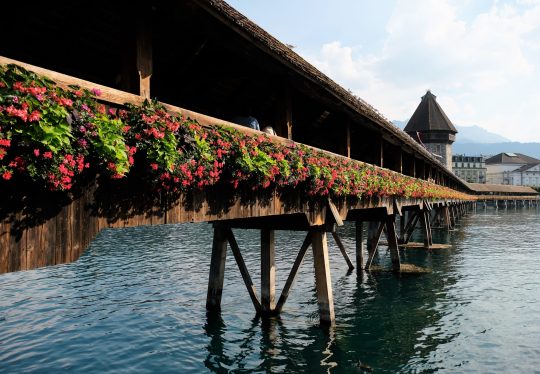
View On WordPress
#Alemannic#Battle of Sempach#Chaff Bridge#Chapel Bridge#Chapel Bridge paintings#Emperor Sigismund#Glacier Garden#Jesuit church#Kapellbrücke#Kapellbrücke paintings#King Rudolph 1 von Habsburg#Lion Monument#Lion of Lucerne#Lucerne#Luzern#Musegg Wall#Rathaussteg bridge#Reuss#Spreuer Bridge#Spreuervbrücke#Swiss#Switzerland
1 note
·
View note
Text
Switzerland is a beautiful country located in the heart of Europe. It is known for its stunning landscapes, including the Swiss Alps, as well as its rich culture and history. There are many things to see and do in Switzerland, depending on your interests.
If you enjoy outdoor activities, Switzerland is a paradise. The Swiss Alps offer a wide range of activities, such as hiking, mountain biking, and skiing. There are also many beautiful lakes and rivers where you can go swimming, boating, and fishing.
If you prefer city life, Switzerland has several charming cities to visit. The capital, Bern, is a UNESCO World Heritage Site and features a beautiful old town with medieval and Renaissance-era buildings. Other cities to consider include Zurich, which is known for its art and culture, and Geneva, which is home to many international organizations.
In terms of cultural attractions, Switzerland has a number of museums and galleries to visit. The Swiss National Museum in Zurich is a great place to learn about the country's history and culture, and the Kunstmuseum in Bern features works by artists such as Picasso and Klee.
Overall, Switzerland is a great destination for travelers of all interests, and it is easy to get around using the country's efficient public transportation system.
Lucerne City
Lucerne is a city in central Switzerland. It is located on the shores of Lake Lucerne and is surrounded by mountains, including Mount Pilatus and Rigi. The city is known for its historic old town, which features medieval and Renaissance-era buildings, as well as its beautiful lakeside location. The Chapel Bridge, a covered wooden footbridge that spans the Reuss River, is a popular tourist attraction in Lucerne.
The city is also home to a number of museums, including the Swiss Transport Museum and the Rosengart Collection, which features works by artists such as Pablo Picasso and Paul Klee. Lucerne is a popular destination for both tourists and locals alike, and it offers a wide range of activities, including hiking, boating, and skiing in the nearby mountains.
How many days are enough for Lucerne?
It's difficult to say exactly how many days are enough to visit Lucerne, as it depends on your interests and the type of vacation you want to have. However, most travelers spend at least a few days in the city, and many people stay for a week or longer.
If you only have a few days in Lucerne, you can still see a lot of the city's main attractions. You could start by exploring the old town, which is home to the Chapel Bridge and the Jesuit Church, and visit some of the city's museums, such as the Swiss Transport Museum and the Rosengart Collection. You can also take a boat ride on Lake Lucerne or take a trip to one of the nearby mountains, such as Mount Pilatus or Rigi.
If you have more time, you can spend a day or two exploring the surrounding area, such as the scenic countryside of central Switzerland or the nearby cities of Zurich and Bern. You could also spend some time enjoying outdoor activities, such as hiking or skiing in the nearby mountains. Ultimately, how much time you need to spend in Lucerne will depend on your interests and the type of vacation you want to have.
Is Lucerne worth visiting?
Yes, Lucerne is definitely worth visiting. Located in central Switzerland, the city is known for its beautiful location on the shores of Lake Lucerne and its stunning mountain setting. It is also home to a number of historic and cultural attractions, such as the Chapel Bridge and the Swiss Transport Museum.
One of the highlights of a visit to Lucerne is exploring the city's old town, which features medieval and Renaissance-era buildings. The Chapel Bridge, a covered wooden footbridge that spans the Reuss River, is a popular tourist attraction in Lucerne and is a great place to take a leisurely stroll. The city is also home to a number of museums, including the Rosengart Collection, which features works by artists such as Pablo Picasso
and Paul Klee.
In addition to its cultural attractions, Lucerne is also a great place for outdoor enthusiasts. The city is surrounded by mountains, including Mount Pilatus and Rigi, which offer a range of activities such as hiking, mountain biking, and skiing. There are also many beautiful lakes and rivers in the area, where you can go swimming, boating, and fishing.
Overall, Lucerne is a charming and picturesque city that offers something for everyone. It is definitely worth visiting if you are planning a trip to Switzerland.
Is 2 days in Lucerne enough?
Two days in Lucerne can be enough to see many of the city's main attractions and get a feel for the city. However, it is worth noting that Lucerne is a city with a lot to see and do, and two days may not be sufficient to experience everything the city has to offer.
If you only have two days in Lucerne, you can still see a lot of the city's main attractions. You could start by exploring the old town, which is home to the Chapel Bridge and the Jesuit Church, and visit some of the city's museums, such as the Swiss Transport Museum and the Rosengart Collection. You can also take a boat ride on Lake Lucerne or take a trip to one of the nearby mountains, such as Mount Pilatus or Rigi.
If you have more time, you can spend a day or two exploring the surrounding area, such as the scenic countryside of central Switzerland or the nearby cities of Zurich and Bern. You could also spend some time enjoying outdoor activities, such as hiking or skiing in the nearby mountains. Ultimately, how much time you need to spend in Lucerne will depend on your interests and the type of vacation you want to have. So, it is always better to have at least 3 to 4 days in Lucerne.
What is the best month to visit Lucerne Switzerland?
The best month to visit Lucerne, Switzerland, depends on your interests and what you hope to see and do during your visit. Here is a brief overview of the weather and activities in each season:
Spring (March to May): This is a great time to visit Lucerne if you want to see the city's beautiful parks and gardens in bloom. The weather is generally mild, with temperatures ranging from around 5°C to 20°C.
Summer (June to August): This is the busiest and most popular time to visit Lucerne, as the weather is warm and sunny, with average temperatures ranging from around 15°C to 25°C. This is a great time for outdoor activities, such as hiking, swimming, and boating.
Fall (September to November): The fall is a beautiful time to visit Lucerne, as the trees turn golden and the weather is mild. Temperatures range from around 5°C to 20°C.
Winter (December to February): If you enjoy skiing and other winter sports, this is a good time to visit Lucerne, as the nearby mountains offer excellent skiing and snowboarding opportunities. However, the weather can be cold and snowy, with temperatures ranging from around -5°C to 5°C.
Overall, the best time to visit Lucerne depends on your interests and what you hope to see and do during your visit. It is worth considering the weather and the types of activities that will be available during your visit.
Is Lucerne a walkable city?
Yes, Lucerne is a walkable city, especially in the old town and around the lake. The city center is relatively small, and many of the main attractions are within easy walking distance of each other. The old town is particularly charming, with narrow streets and medieval and Renaissance-era buildings. The Chapel Bridge and the Jesuit Church are two of the city's most popular tourist attractions, and they are both located in the old town.
In addition to the city center, the lakefront is another popular area for walking, with a promenade that runs along the lake. The lakefront is a great place to take a leisurely stroll, enjoy the views, and relax by the water.
Overall, Lucerne is a compact city that is easy to explore on foot. However, if you want to see more
of the city or the surrounding area, you can also use the city's efficient public transportation system, which includes buses, trams, and boats.
Best Places to Visit in Lucerne, Switzerland
Lucerne, Switzerland is a beautiful and charming city with a rich history and a stunning lakeside location. Here are a few of the best places to visit in Lucerne:
Old Town: The old town is the historic center of Lucerne and is home to many of the city's main attractions. Highlights include the Chapel Bridge, a covered wooden footbridge that spans the Reuss River, and the Jesuit Church, which features beautiful Baroque-style architecture. The old town is also home to many charming shops, restaurants, and cafés, making it a great place to wander and explore.
Lake Lucerne: The lake is a highlight of any visit to Lucerne and offers a range of activities, such as swimming, boating, and fishing. You can take a leisurely stroll along the lakefront promenade, enjoy the views, and relax by the water.
Mount Pilatus: This mountain, which is located just outside of Lucerne, offers some of the most breathtaking views of the city and the surrounding area. You can take a scenic train or cable car ride to the top of the mountain, or hike up if you're feeling adventurous.
Swiss Transport Museum: This museum is located in Lucerne and is a great place to learn about the country's transportation history. It features exhibits on trains, cars, planes, and more, and is a must-see for anyone interested in technology and engineering.
Rosengart Collection: This museum, which is located in the old town, features a wide range of works by artists such as Pablo Picasso, Paul Klee, and Salvador Dali. It is a great place to see some of the world's most famous works of art.
Overall, there are many amazing places to visit in Lucerne, and these are just a few examples. Whether you're interested in history, culture, or outdoor activities, there is something for everyone in this beautiful city.
0 notes
Text


Black Reuss is the flow of life of a man who describes the change and chapter he experienced, through music. Life is like a river, always moving, mostly downward. The name originates from the river Reuss, a Swiss river that rises in the Gotthard massif in the middle of Switzerland, where Black Reuss lived during the writing of “Metamorphosis”.
“Metamorphosis” was the first chapter, re-released on September 6th, 2022, by Sliptrick Records.
youtube
0 notes